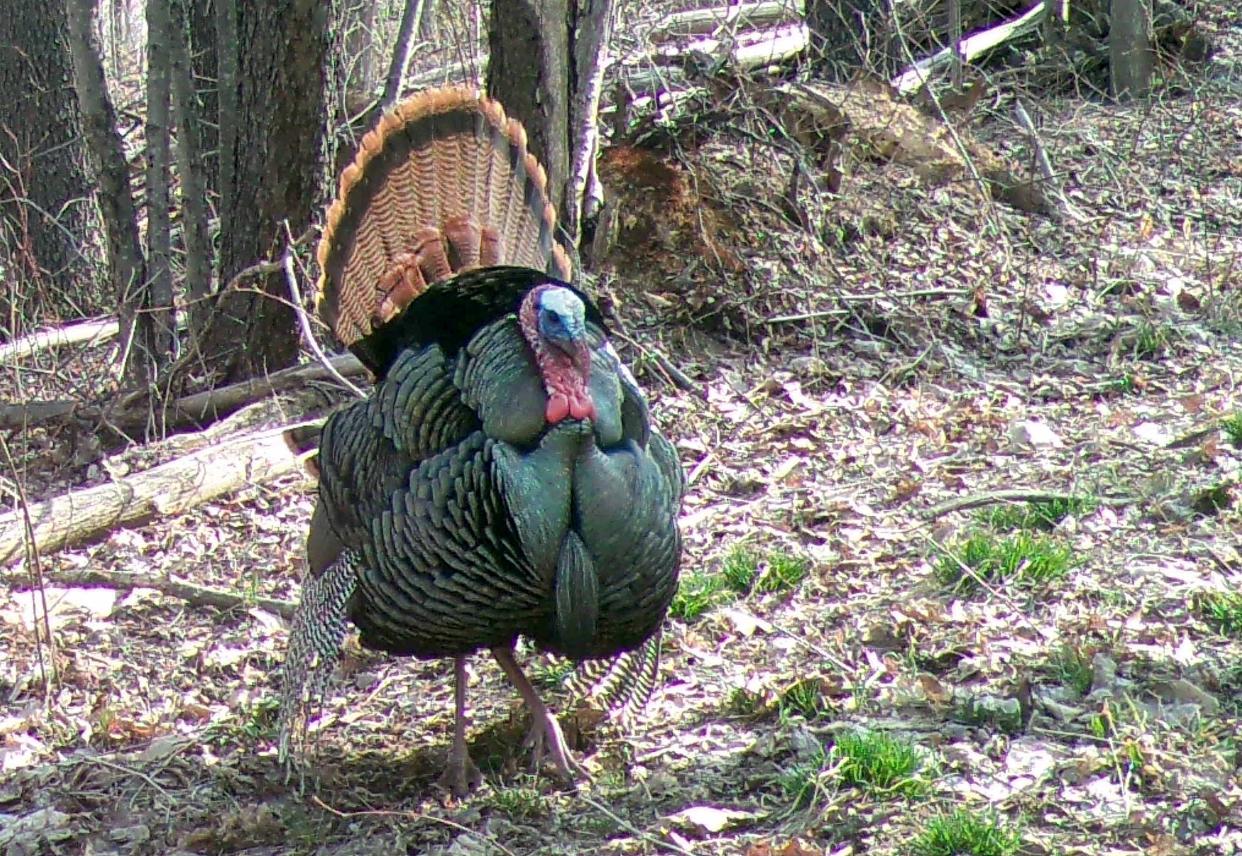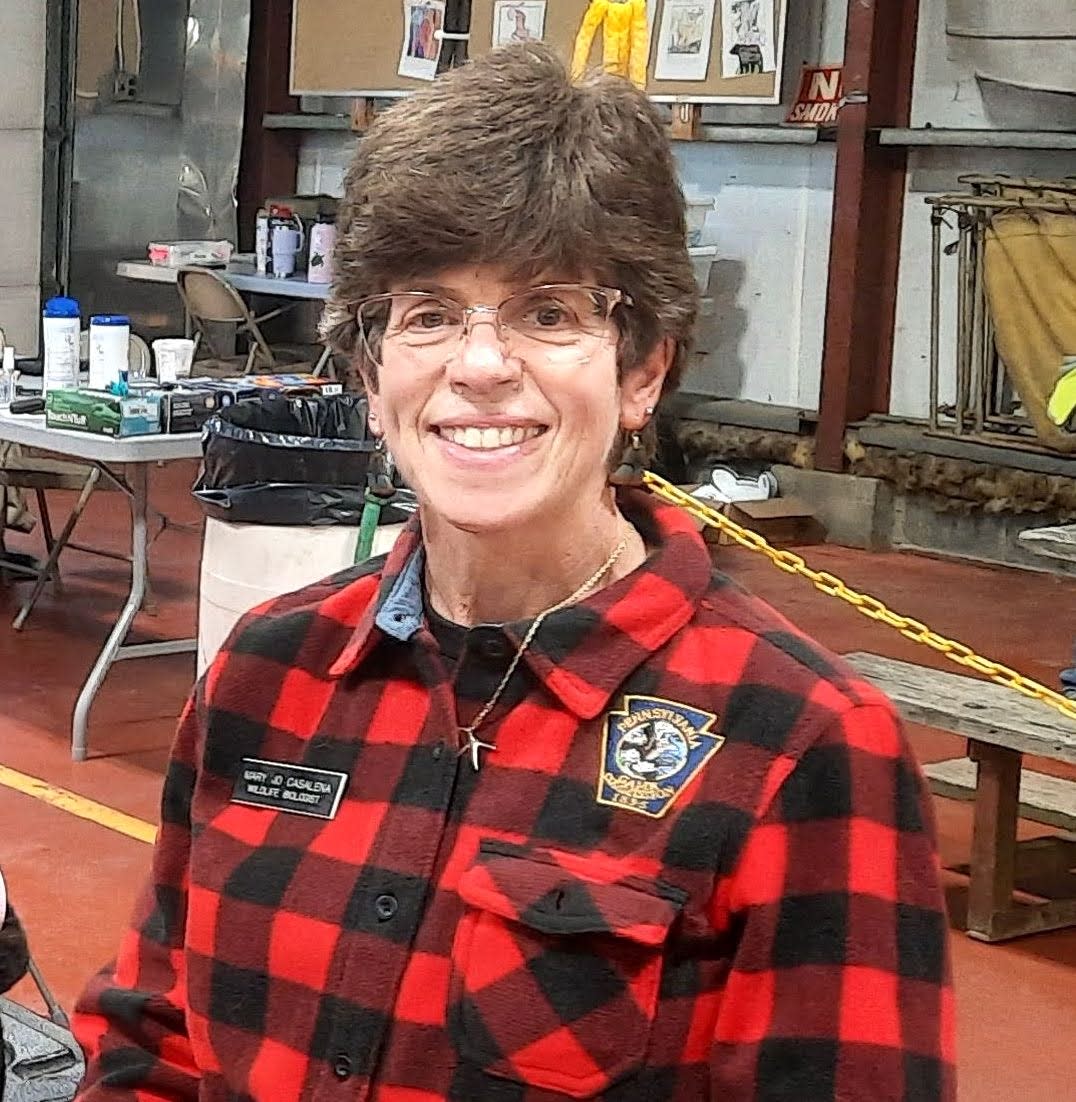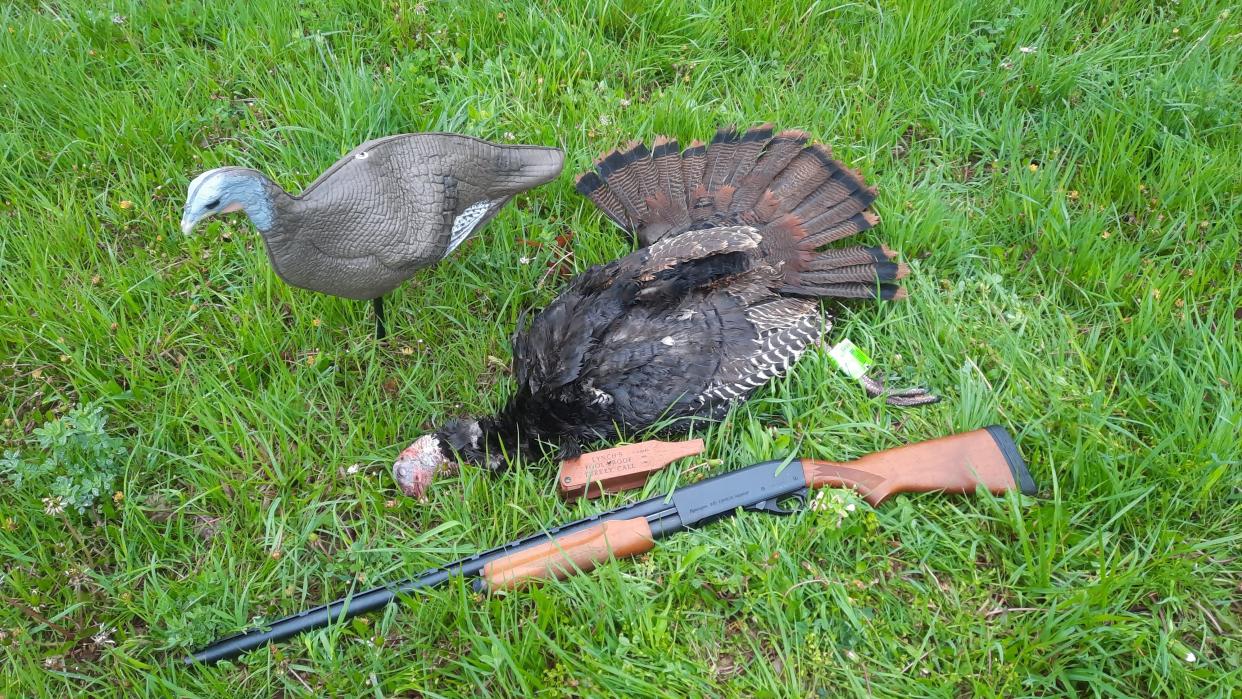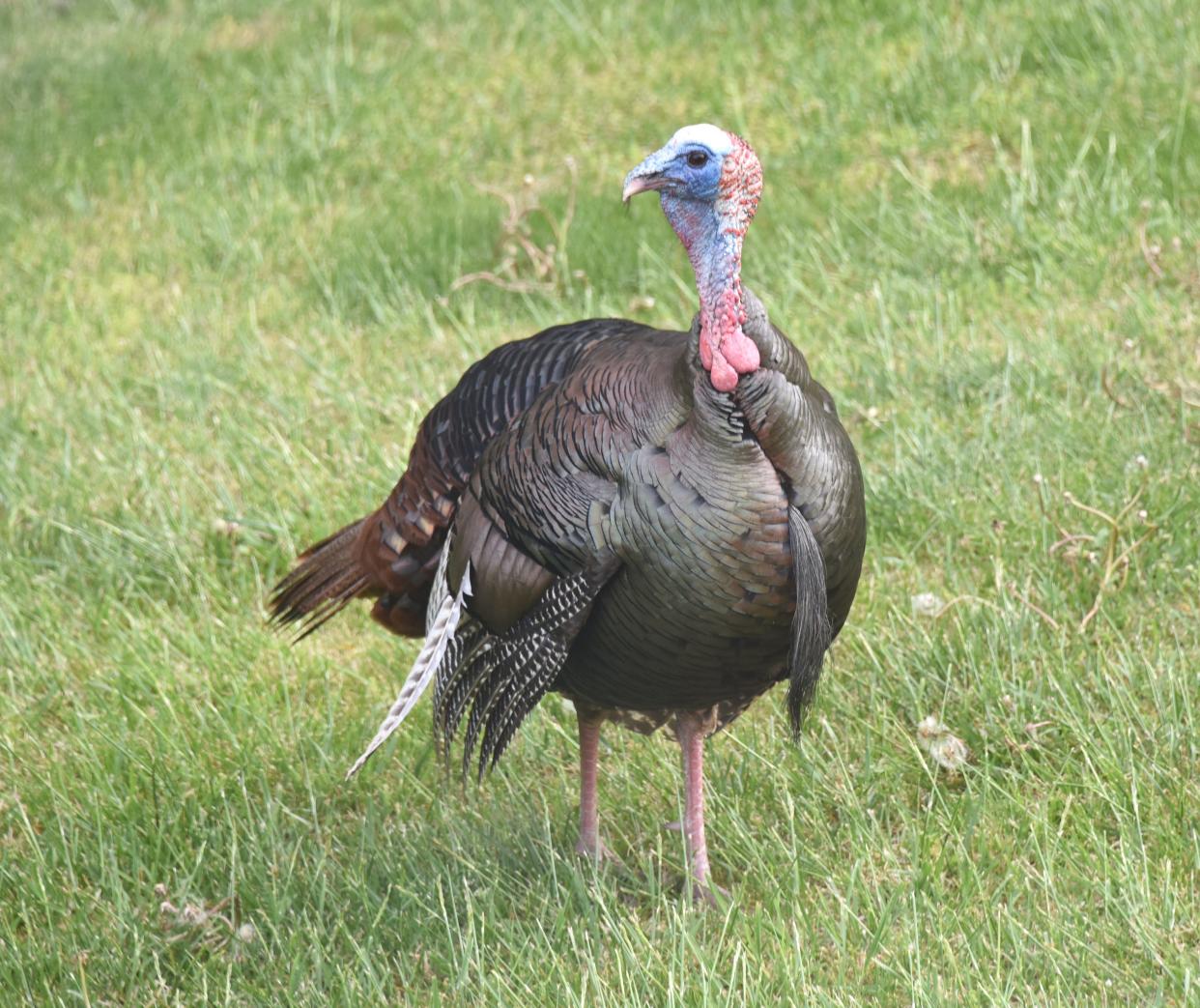State turkey biologist explains why some turkeys may not be gobbling this spring
With Pennsylvania’s spring gobbler season soon underway, an expert explains why turkeys may be in certain woodlots even though you’re not seeing them.
The season starts with a special hunt until noon on April 27 for junior and mentored hunters 16 years old and under. The statewide season runs May 4-18 when only bearded birds can be hunted a half-hour before sunrise until noon. From May 20-31, the season continues with expanded hunting hours each day to a half hour after sunset.
Mary Jo Casalena, turkey biologist for the Pennsylvania Game Commission, is optimistic about the opportunities hunters have in coming weeks for several reasons.

In the fall, Pennsylvania had an abundant hard mast crop of acorns and there was a mild winter across the state.
“They didn’t suffer too much weight loss during the winter,” she said about the weather being good for wildlife. “They are coming in with great body condition. They were very well fed.”
There were plentiful food sources and little snowfall that can cover the food away from the birds. In the spring when the woods started to turn green, the birds have been eating the new shoots, grubs and worms that were out.
Conservation efforts: Game Commissioners optimistic about plan for martens despite postponing it indefinitely
“Turkeys haven’t needed to come out into the open like they normally do during the winter,” she said about them sometimes feeding on waste grains in agricultural fields. “They weren’t as visible throughout the winter.”
With the mild winter keeping the hens healthy and early spring-like weather conditions, she said the birds should have a good breeding season.

“They have plenty of weight to be producing eggs as soon as their hormones begin changing due to daylight hours,” she said.
Scouting for turkeys
With food being available in the woods, she said those scouting for turkeys should be looking in more places than in fields.
“Just because you don’t see them, doesn’t mean they aren’t there,” Casalena said.
She recommends walking in the woods and looking for scratchings on the ground.
When listening for gobbling birds, she said it can be deceiving how many birds are there if there are different age classes. Older turkeys may quiet the younger gobblers that are known to be more vocal.
“Spending some time out in the woods and spending a little more time than just gobbling hour and figuring out what your age class is in the different areas that you want to hunt, can really help a lot,” she said.
Some of the Wildlife Management Units that had the best turkey production in 2022 were 2G, 2H and 4D in the central part of the state where they had more than 4 poults per hen. Those birds are two years old this spring and should be gobbling.
Harvest comparisons
In spring 2023, hunters got about 39,500 turkeys. That number is higher than the past two years. In 2022, the spring harvest was 35,738 and hunters got 28,089 birds in the 2021 spring season.
“We expected that increase because we had an exceptional hatch and recruitment in 2021 with really good spring weather and the cicada hatch in the southern tier of the state,” she said. The turkeys and their predators both fed on the cicadas. “You could really see the increase in those southern tier management units,” she said about turkey numbers.
There have been years with higher harvest totals. In 2018, hunters shot more than 40,000 spring turkeys. In 2014 and 2015, the total was more than 41,000 each year. “It’s usually above 30,000,” she said.

The hatch and recruitment of young birds in 2023 is being categorized as an average year. She said the hens they studied each averaged 2.9 poults statewide.
In the previous years, the hens averaged 3.1 poults per hen. “Three poults per hen is really good,” she said.
Daniel Bevevino, 41, of Russell, Warren County, has hunted turkeys for about three decades and does a lot of preseason scouting.
“As far as the population, I think it’s increased a little bit. What I’ve noticed is the activity from these birds the last couple years is that I definitely feel like they are breeding earlier than they were, which isn’t always a good thing,” he said about the possibility of eggs hatching before the weather can accommodate the fragile poults.
He’s been seeing plenty of turkeys during his hunts and scouting trips. “I think I went one day all season without hearing a bird,” he said.
He thinks the hunting season is appropriate as he has found birds throughout the month of May. “The last week of the season was fire. It was so hot. I called in so many birds,” he said, adding that they were double and triple gobble responses and running to come in to his calls. “The best of all the season was the last week for us."
Winter trappings
The agency is studying the movements of turkeys in four study areas and does net trapping during the winter months to document the birds and monitor their health.
The staff has 207 active transmitters on hens and 160 transmitters on gobblers in Wildlife Management Units 2D in westcentral Pennsylvania, 3D in the northeastern part of the state, 4D in central Pennsylvania and 5C in the southeastern corner.
More: Hunting seasons get finalized but PGC wants to confirm which day is best for rifle opener
Hunters who get a bird with a location transmitter are urged to report it to the Game Commission who can reuse the device on another bird. If the bird has an aluminum leg band, the hunter can keep the band but the agency would like to know where the hunter harvested the bird. The hunter will also find out when and the general area the bird received its leg band. The information to report the birds is labeled on the bands. “We try to get out about 440 bands each year on gobblers,” Casalena said.

Advice for hunters this spring
“There should be plenty of birds now. But the thing is I don’t think there is going to be as much gobbling this year as there was last year,” she said. “It all depends on where you are hunting. Gobbling intensity is really dependent on the age structure of the local population. If you have a lot of 2-year-olds in your local population, you’re are going to have a lot of gobbling. If you don’t, it doesn’t necessarily mean that there are no turkeys there. It could just mean that they are not gobbling.”
Scouting at different times of the day will really reveal what’s going on in your local area.
“If you have time before work to go out for just that peak of gobbling on the roost and then you have to go work, go out after work sometime in the late afternoon and look for sign and try to get some eyes on birds without calling like a hen,” she said.
“I’m one of those believers in not doing any yelping preseason,” she said about possibly educating the birds.
Brian Whipkey is the outdoors columnist for USA TODAY Network sites in Pennsylvania. Contact him at bwhipkey@gannett.com and sign up for our weekly Go Outdoors PA newsletter email on this website's homepage under your login name. Follow him on Facebook @whipkeyoutdoors, and Instagram at whipkeyoutdoors.
This article originally appeared on The Daily American: When is spring gobbler season in Pennsylvania?
